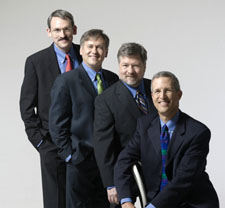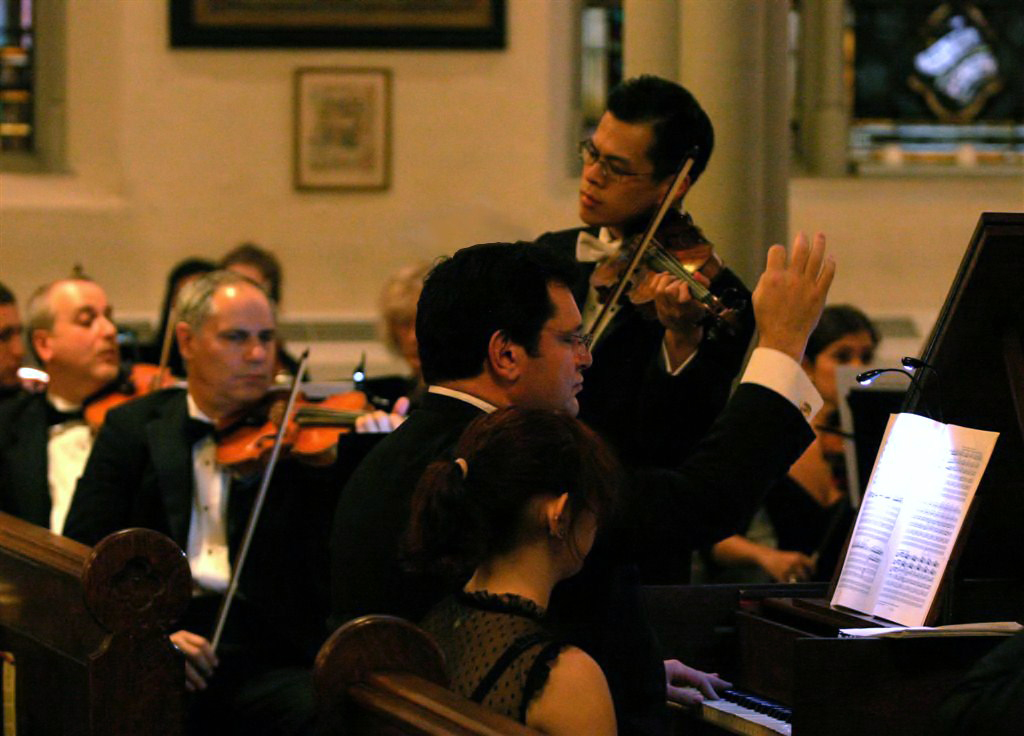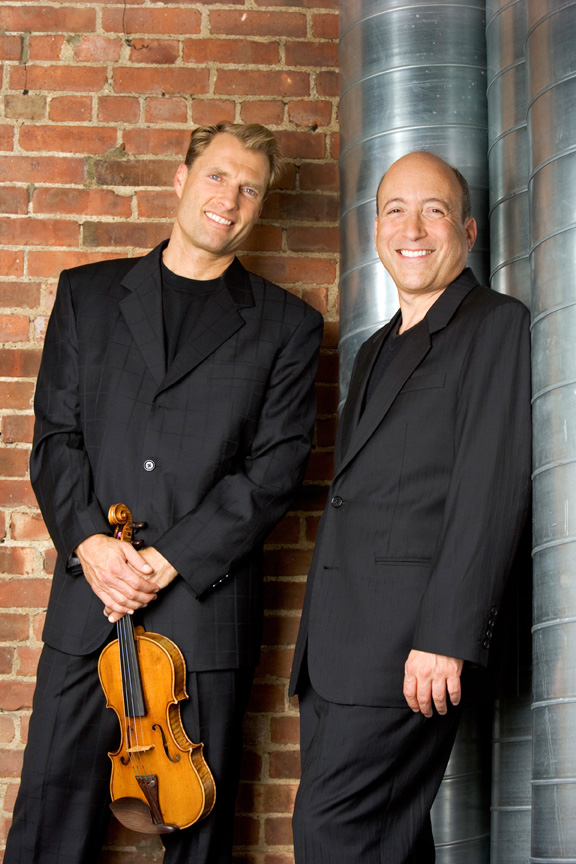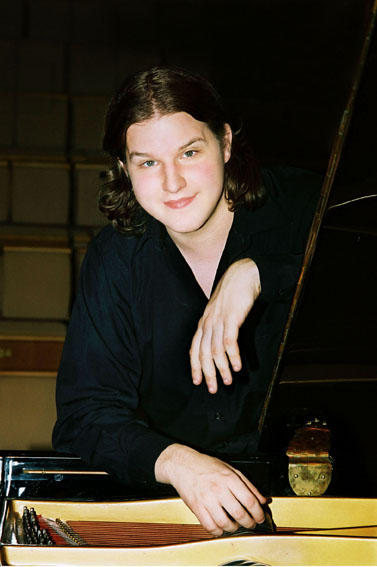Orion String Quartet in Review
Mannes College of Music; New York, NY
October 22, 2010
November 11, 2010

Orion String Quartet
The Orion String Quartet (Daniel and Todd Phillips, alternating violins, Steven Tenenbom, viola, Timothy Eddy, cello), opened its annual concert series at the Mannes College of Music, where it is in residence, with a performance of “The Art of the Fugue,” Bach’s monumental final work. He wrote it in 1750 during the last days of his life, leaving the last fugue unfinished, as a kind of summing up of his exploration of counterpoint. He gave no instructions for the work’s execution, so it is up to the players to determine the most appropriate instruments for its realization. As a result, it has inspired arrangements for combinations ranging from small chamber groups to full orchestra. The Orion Quartet chose the transcription for four strings and five winds by the late great flutist, Samuel Baron, and enlisted the renowned woodwind quintet Windscape (Tara Helen O’Connor, flute, Randall Ellist, oboe, Alan R. Kay, clarinet, Frank Morelli, bassoon, David Jolley, horn) as partners.
The concert was extremely interesting. Baron used the instruments with great inventiveness, sometimes alternating strings and winds, sometimes mixing them in various combinations, sometimes merging both groups in their entirety. Such an imaginative transcription harbors the danger of focusing the listener’s interest on the instrumental timbres rather than the musical content, as if the subject of a painting had been submerged in its brilliant colors. Baron averted this hazard: though making the most of the instruments’ timbral variety, his settings underline and enhance the counterpoint and bring out the character of each section. The only somewhat incongruous, indeed jarring sound was that of the clarinet, which Bach could not even have imagined.
The performance was most excellent. Dynamics were carefully planned, calibrated for contrast, build-up, clarity and balance; the phrasing was exemplary, the playing expressive, austere, and pristinely beautiful. Naturally, each group was perfectly unified in itself, but when they intermingled or combined, they also sounded totally integrated.
For its second concert, the Orion reverted to its usual configuration as a string quartet for a program as deeply rooted in romanticism as the first had been in classical baroque: Schumann’s Quartet No. 1 in A minor, Op. 41 No. 1 (1842), and Schubert’s final Quartet No. 15 in G major, Op. 161 (1826).
Schumann’s Quartet finds him in his “Eusebius” mode. The first movement is lyrical, calm and serene, with long flowing melodies and friendly give-and-take between the instruments. The Scherzo (like most Scherzos written at that time), shows the influence of that supreme master of the genre, Mendelssohn, but it is more robust, less elfin than his. It also departs from its model by featuring two contrasting Trios. Schumann the “Lieder” composer takes over the slow movement, as one instrument spins out a sustained melody while the others weave garlands around it. The Finale is a brilliant run-around with the instruments chasing one another in cascading scale-passages.
The Schubert is not only one of the greatest, but also one of the longest, physically and emotionally most exhausting Quartets in the literature. The Orion added to its “heavenly length” by taking all the repeats – a feat of courage and endurance. The music encompasses the heights and depths of human emotion, but has about it an underlying air of resignation and farewell. In the first movement, drama and lyricism alternate; the questioning, searching second theme is developed with endlessly inventive rhythmic variety, accompanied by wildly leaping tremolos, a basically orchestral, strenuous bowing device that can make one’s right arm ache just to watch. The slow movement is one of Schubert’s most moving compositions. Its beautiful, melancholy minor-mode theme is interrupted by a wrenching outburst of passionate despair; the theme’s return in major seems like a sadly smiling, parting ray of sunshine.
The Scherzo is fleet, and spooky in the minor-mode passages; the Trio is a lilting, wine-happy waltz. The very long Finale is in constant emotional flux, not only between its several themes, but also within them, restlessly changing from minor to major, turbulent to carefree, stern to playful. Though technically and musically very demanding, its greatest difficulty probably lies in keeping up with these sudden, drastic mood-changes. The Orion’s players met this challenge, as well as all the others posed by this program, with flying colors. As is their custom, the violinists traded parts, Todd taking the first in the Schumann, Daniel in the Schubert. Though each has a distinctly individual sound and puts his own personal stamp on the works he leads, the group’s tonal homogeneity and musical unanimity is totally unaffected by who sits in which chair. Their expressiveness, always deeply felt and dictated by their response to the music, speaks directly to the listeners’ hearts. No wonder their concerts draw a standing-room-only audience of devoted, enthusiastic admirers.
by Edith Eisler for New York Concert Review; New York, NY

![Colin in Amahl 1[1]](https://nyconcertreview.com/blog/wp-content/uploads/2011/01/Colin-in-Amahl-111.jpg)







